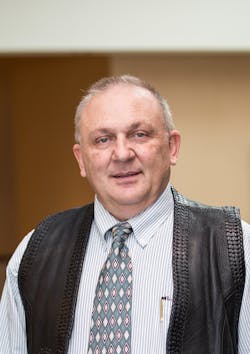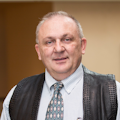
The International Manufacturing Technology Show (IMTS) is held every second year at the McCormick Place Convention Center near downtown Chicago and runs for six days—Monday through Saturday. In days past this show would run for two weeks, including the weekend in between. While Saturdays were slow, Sundays were deserted as one would expect—but it was too expensive to simply 'turn everything off' for the weekend. Many companies did a change of staff on Saturday, with the week 1 team trading off for the week 2 team. The newer 6-day venue certainly works better from the point of view of resource allocation. Even with the shortened duration, the draw is still huge. This year over 98,000 people were preregistered, with total attendance of over 114,000.
As I suggested in my last blog, the companies with 3D printing capability—both equipment and service providers—were quite busy pretty much throughout the show. In fact, I did not talk with a single vendor who complained about the show traffic. All of the time I was on the floor, the attendee traffic was quite lively, with a high percentage of people in 'buying mode' for some equipment or service and near-term plans to spend cash. AMT's Emerging Technology Center (ETC) did construct a complete version of a 3D-printed electric car in partnership with IMTS partner Local Motors. This effort was performed front and center at the North Hall main entrance, with the actual printing effort taking about 50 hours.
In addition to the 'regular' attendees, there were also over 13,500 students from 8 years old to high school seniors (from 800 different schools) involved in the Smart Force Student Summit. A whole hall was devoted to the Student Summit, including robotics competitions. Students were given a bag full of cool things, and were invited to listen to talks devoted to sparking interest among young minds in joining the ranks of manufacturing professionals upon school graduation. One of the speakers at the Summit, Captain (retired) Wendy Lawrence, gave examples from her experience as a Navy chopper pilot and also as a shuttle astronaut. It turns out there were over 2.5 million parts on the space shuttle, many of them cut, drilled, marked, or otherwise manufactured using lasers and laser technology. It takes a special design to control 2.5 million pounds of thrust!
One other notable contributor is the Gene Haas Foundation. Haas Automation is the second biggest machine tool builder in the world and delivers about 12,000 machines per MONTH! Wow! How long will it be before laser tools are being delivered at that rate? Maybe this is in the not-too-distant future? The GHF is giving away money for student education—a lot of money! For information on individual scholarships and also program funding, see ghaasfoundation.org.
The Lasers for Manufacturing Event (LME) is next week and I am looking forward to seeing everyone there. Unlike IMTS, this venue is devoted exclusively to laser manufacturing. Of particular interest to our readers may be the following talks: The 11:15 Keynote address on Wednesday will be presented by our editor-in-chief David Belforte, entitled "The 2014 Market for Industrial Lasers and Applications." The 2:15 Keynote address will be given by Yours Truly and is entitled, "Ultrafast Lasers for Manufacturing."
Enjoy!
I am always interested in hearing your thoughts concerning laser micromachining, the laser industry, comments on entrepreneurial endeavors, etc. AND … we are always looking for fresh, publishable material. Please feel free to contact me at [email protected].
About the Author
Ron Schaeffer
Ron Schaeffer, Ph.D., is a blogger and contributing editor, and a member of the Laser Focus World Editorial Advisory Board. He is an industry expert in the field of laser micromachining and was formerly Chief Executive Officer of PhotoMachining, Inc. He has been involved in laser manufacturing and materials processing for over 25 years, working in and starting small companies. He is an advisor and past member of the Board of Directors of the Laser Institute of America. He has a Ph.D. in Physical Chemistry from Lehigh University and did graduate work at the University of Paris. His book, Fundamentals of Laser Micromachining, is available from CRC Press.
